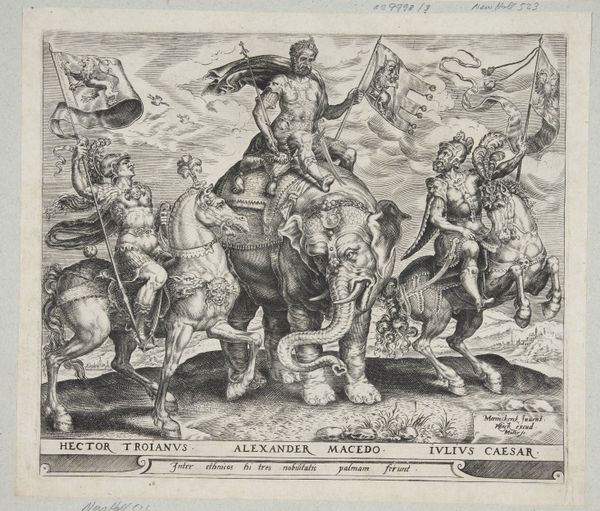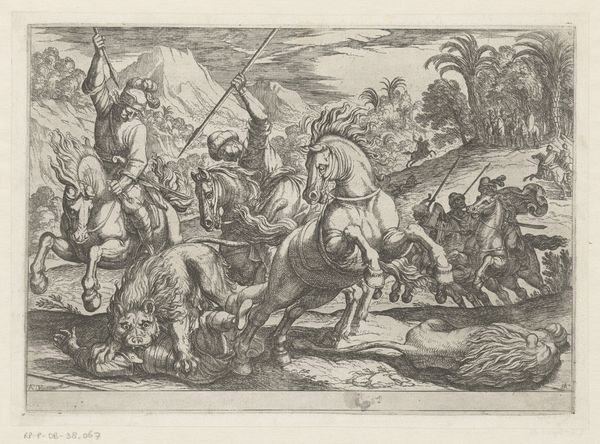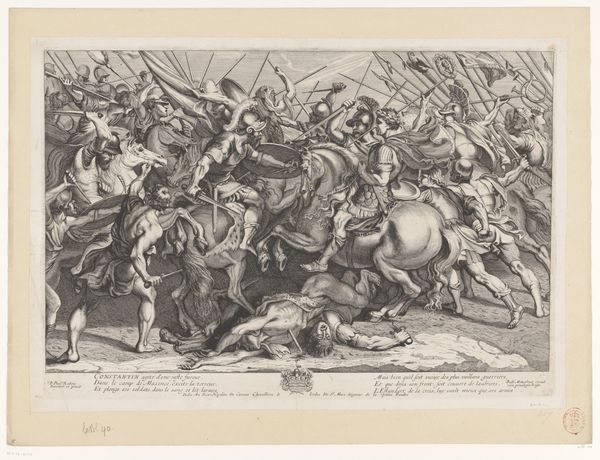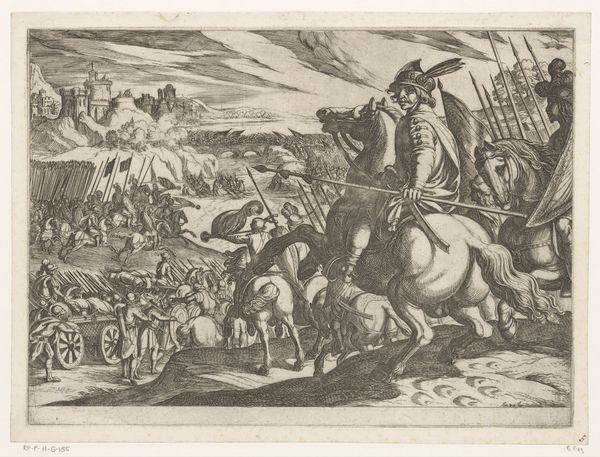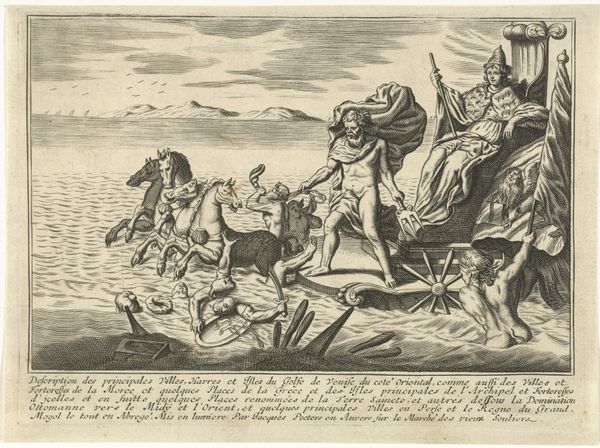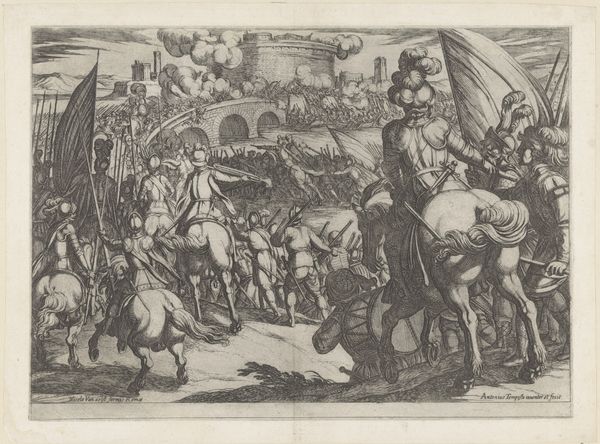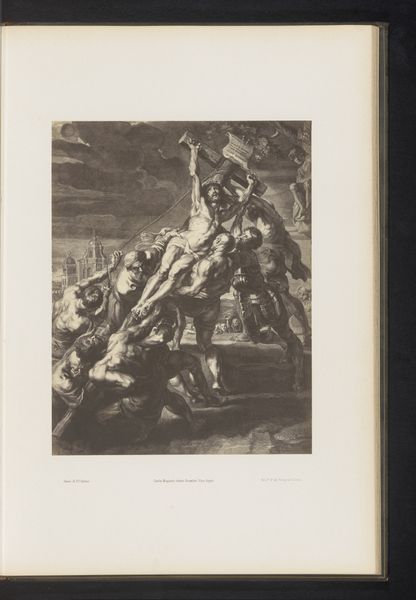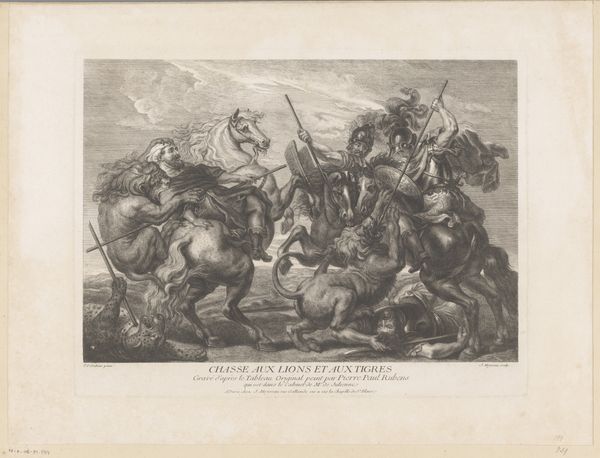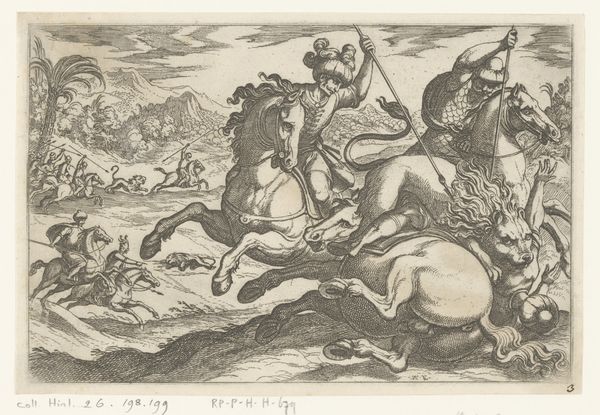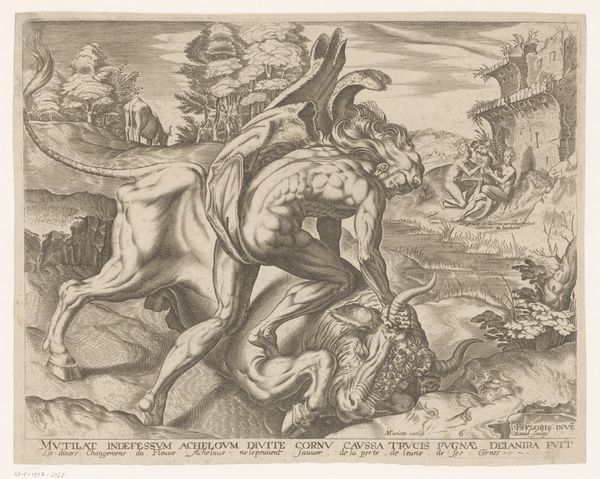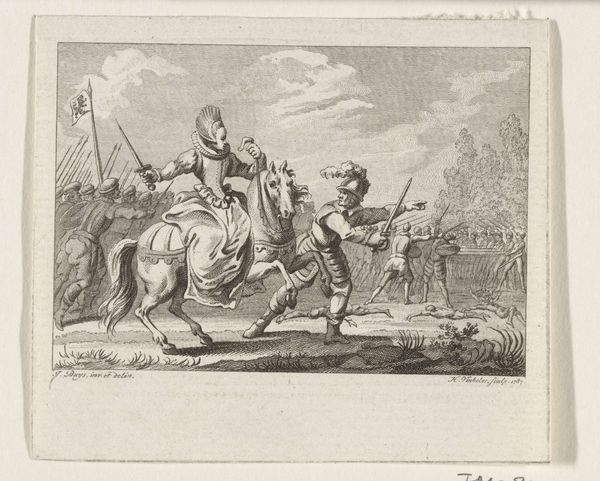
print, engraving
#
allegory
#
baroque
# print
#
figuration
#
line
#
history-painting
#
engraving
Dimensions: 441 mm (height) x 637 mm (width) (bladmaal)
Curator: This engraving from the 17th century, titled "Alexander the Great, King of Macedonia", presents a complex visual narrative. Editor: It strikes me as a celebration of power. Look at Alexander on horseback, trampling figures underfoot – it's a display of conquest, amplified by that multi-headed beast looming in the background. There is also some sort of town or citadel in the background on the upper-left of the engraving; do you see this carrying allegorical value, also? Curator: Absolutely, this scene is heavy with symbols. Alexander himself embodies ambition and leadership, of course. The figures he subjugates represent defeated foes, reflecting historical accounts but also perhaps alluding to contemporary political tensions. I cannot recognize for certain, but my hypothesis is that it is not coincidental. Also, there is the winged multi-headed beast; this imagery recalls Cerberus or any other classical guardian to the gates of hell. Alexander here perhaps subjugates a chaotic force. The background town might represent a territory he subdued. The engraving as a whole offers insight into cultural ideas around historical figures. Editor: What's fascinating is how the print’s stark lines both celebrate and interrogate ideas about legacy. Alexander's “greatness” relies upon narratives of war, dominion, the physical conquering and collapse of communities. The question is how do the values associated with his name extend or differ with how those values appear in contemporary political and cultural systems? What should we think about Alexander's status and reputation for contemporary culture as we consider his story, myth, and legacy in present socio-cultural systems? Curator: These engravings, though ostensibly celebrating historical figures, act as mirrors reflecting society's own values and anxieties. Is greatness inherently linked to domination, or is there another path to enduring fame? The artist presents an interpretation, and the viewer must, in turn, interpret. Editor: It seems we're left with more questions than answers, which is often the most stimulating outcome when confronting art. It challenges us to not only reflect on history but to question our present.
Comments
No comments
Be the first to comment and join the conversation on the ultimate creative platform.
